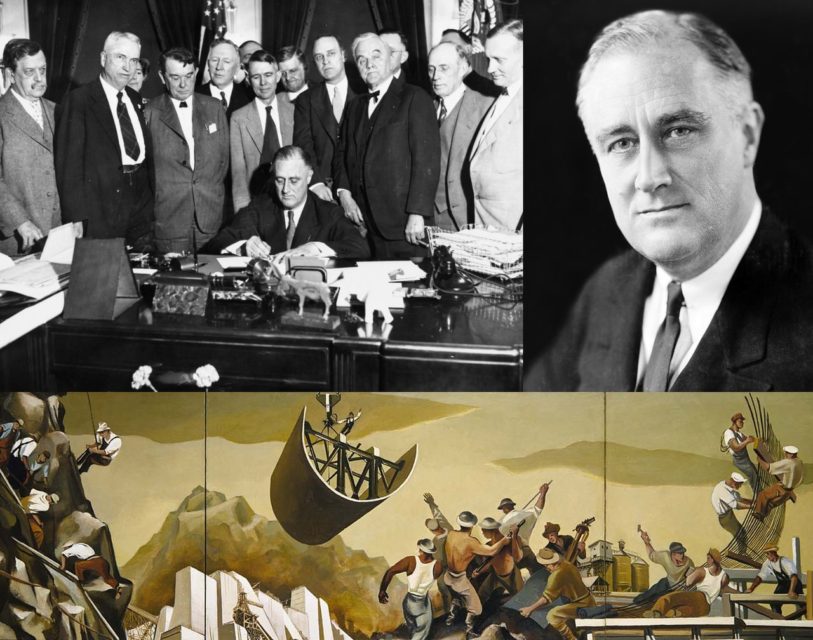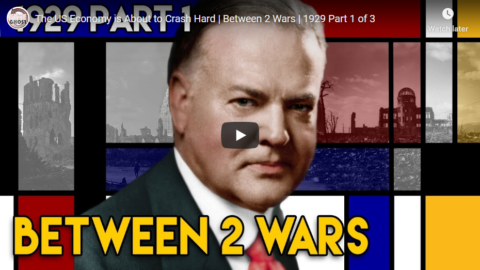The Tank Museum
Published 11 Apr 2020Join Curator David Willey as he takes you on a tour of The Tank Museum’s Tank Story Hall, which houses over 30 key vehicles from Little Willie to Challenger 2. In this section he looks at the inter-war vehicles and gives you a potted history of the time period between the two World Wars.
Support the work of The Tank Museum on Patreon: ► https://www.patreon.com/tankmuseum
Visit The Tank Museum SHOP & become a Friend: ► https://tankmuseumshop.org/Twitter: ► https://twitter.com/TankMuseum
Instagram: ► https://www.instagram.com/tankmuseum/
Tiger Tank Blog: ► http://blog.tiger-tank.com/
Tank 100 First World War Centenary Blog: ► http://tank100.com/
April 13, 2020
Curator’s Tank Museum Tour: Tank Story Hall – Inter-War | The Tank Museum
January 11, 2020
Feature History – Emu War
Feature History
Published 25 Jan 2017Hello and welcome to a Feature History special; featuring the Emu Wars, the incompetence of my own country, and my miserable attempt at doing the accent I should have.
Patreon
https://www.patreon.com/FeatureHistory
https://twitter.com/Feature_History
———————————————————————————————————–
The credit for this video goes to Feature History’s employee of the month, me, for the art, animation, script, voice-over.
Music
Kevin MacLeod – “Drankin’ Song”
Kevin MacLeod – “Bama Country”
November 22, 2019
The Far Right French Revolution | BETWEEN 2 WARS I 1934 Part 4 of 4
TimeGhost History
Published 21 Nov 2019In February 1934, France threatens to go down the same political rabbit hole as Germany: anti-Semitic Fascism, but the French extremists are not quite as well organized as the Nazis.
Join us on Patreon: https://www.patreon.com/TimeGhostHistory
Hosted by: Indy Neidell
Written by: Francis van Berkel & Spartacus Olsson
Directed by: Spartacus Olsson and Astrid Deinhard
Executive Producers: Bodo Rittenauer, Astrid Deinhard, Indy Neidell, Spartacus Olsson
Creative Producer: Joram Appel
Post-Production Director: Wieke Kapteijns
Research by: Francis van Berkel
Edited by: Daniel Weiss
Sound design: Marek KamińskiColorizations: Klimbim/Olga Shirnina: https://klimbim2014.wordpress.com
Daniel Weiss, Oleg M, Dememorabilia, Julius Jääskeläinen, Adrien Fillon.A TimeGhost chronological documentary produced by OnLion Entertainment GmbH.
From the comments:
TimeGhost History
52 minutes ago
We now get to some fascinating stuff that is less known outside of France. The events in 1934 will not create a new Fascist state, but they will have deep impact on how France deals with WW2. The February crisis influences military policy, the civilian response, and the way both right wing and left wing political parties deal with the German invasion and occupation. In the next couple of weeks we will come out with a War Against Humanity episode on the WW2 channel about the beginning of French collaboration and resistance — this episode provides essential background to how that plays out in 1940.
October 18, 2019
The State of the US is Depressing | BETWEEN 2 WARS I 1933 Part 2 of 3
TimeGhost History
Published 17 Oct 2019The American economy is in a state of despair. Mass unemployment and poverty sweep the lands. In 1933, a new President is elected, promising to change things for the better. His name is Franklin D. Roosevelt.
Join us on Patreon: https://www.patreon.com/TimeGhostHistory
Subscribe to our World War Two series: https://www.youtube.com/c/worldwartwo…
Hosted by: Indy Neidell
Written by: Francis van Berkel and Spartacus Olsson
Directed by: Spartacus Olsson and Astrid Deinhard
Executive Producers: Bodo Rittenauer, Astrid Deinhard, Indy Neidell, Spartacus Olsson
Creative Producer: Joram Appel
Post-Production Director: Wieke Kapteijns
Research by: Francis van Berkel
Edited by: Wieke Kapteijns
Sound design: Marek KaminskiColorized pictures by Norman Steward, Daniel Weiss and Joram Appel.
Sources:
A TimeGhost chronological documentary produced by OnLion Entertainment GmbH.
From the comments:
TimeGhost History
12 minutes ago (edited)
If you’re new here, you might not be familiar with Indy Neidell and his other work. Not only are we doing “Between Two Wars”, on the events and years leading up to World War Two (of which this video is a part), also we’re covering World War Two in realtime week-by-week, exactly 79 years after it all happened. We have now entered the second year of the war. If you haven’t already, check out the World War Two Channel for what maybe one day will become the most complete account of The Second World War: https://www.youtube.com/c/worldwartwoCheers,
Joram
September 6, 2019
Germany Commits Suicide by Cancelling War Reparations | BETWEEN 2 WARS I 1931 Part 3 of 3
TimeGhost History
Published on 5 Sep 2019Contrary to popular belief it is not so much reparations themselves that puts the first stepping stone in place for the Nazi to rise to power. Instead it is the cancellation of war reparations, or more correctly put; the measures that “The Hunger Chancellor” Heinrich Brüning implements to get reparations cancelled that pushes Germany over the financial brink and into the hands of Hitler and Goebbels.
Join us on Patreon: https://www.patreon.com/TimeGhostHistory
Subscribe to our World War Two series: https://www.youtube.com/c/worldwartwo…
Hosted by: Indy Neidell
Written by: Spartacus Olsson and Francis van Berkel
Directed by: Spartacus Olsson and Astrid Deinhard
Executive Producers: Bodo Rittenauer, Astrid Deinhard, Indy Neidell, Spartacus Olsson
Creative Producer: Joram Appel
Post-Production Director: Wieke Kapteijns
Research by: Francis van Berkel and Spartacus Olsson
Edited by: Wieke Kapteijns and Daniel Weiss
Sound design: Iryna Dulka
Colorization by Daniel WeissThumbnail: Goebbels colorized bu Olga Shirnina, aka Klimbim
Archive by Reuters/Screenocean http://www.screenocean.com
A TimeGhost chronological documentary produced by OnLion Entertainment GmbH.
Sources:
Ruth Henig, The Weimar Republic 1919-1933
Theo Balderston, Economics and Politics in the Weimar Republic
Kolbe, The Weimar Republic
Harold James, The Causes of the German Banking Crisis of 1931
Feuchtwanger, From Weimar to HitlerSources images: Bundesarchiv
From the comments:
TimeGhost History
49 minutes ago (edited)OK, so this video is about Naziism to some degree, it’s also a serious look at how Germany started transitioning into Naziism – this is not speculation, it’s not even very controversial, it just happens to not fit with many popular superficial misconceptions. Now, we love it when you guys debate under our videos, even when it’s in disagreement with something we or somebody else said, but before you do so please save us some time and read our rules and consider if your post is against our rules. If you think it might be, consider editing or just not posting it — otherwise you’re just wasting our time and your own — because no matter what, we will moderate this.
If your going to post that the Versailles Treaty was to blame you might want to read this instead: https://community.timeghost.tv/t/why-the-treaty-of-versailles-didnt-cause-naziism-answering-a-guy-on-youtube/1858 — that’s Indy’s extensive answer to that claim.
If you’re going to claim “Naziism was Left Wing” well you can do that, we don’t suppress opinions, not even silly ones, but we suggest that you read this instead: https://timeghost.tv/national-socialism-an-extreme-left-wing-ideology/ that’s Spartacus’s explanation why it is not considered so by historians (and why it’s not really that important).
If you’re going to praise Naziism or celebrate Communism, or propose that any other form of lethal extremism is a great idea — just don’t, we do remove any promotion for lethal anti-democratic ideologies, and will probably revoke your positing privileges.
If you’re going to start peddling conspiracy theories about Jews controlling [insert your crazy idea here] or “it was the Jews” — definitely don’t do that or it will be last thing you post here.
If you’re going to say that stopping German Communism is what caused Naziism — well you can do that … it’s pretty much wrong or at least a gross misrepresentation, and you’ll look like an idiot to anyone who knows their factual German history, but you can do that if publicly proclaiming ignorance is your thing — we would however suggest waiting for our next video on Germany’s elections in 1932 for a more correct take on that instead.
July 27, 2019
The US Economy is About to Crash Hard | Between 2 Wars | 1929 Part 1 of 3
TimeGhost History
Published on 25 Jul 2019In 1929 it’s been nothing but growth for the US economy for years, at least if you judge by the New York Stock Exchange. But all that glitters is not gold, and when the gilding comes off this bubble it sinks like a lead ballon.
Join us on Patreon: https://www.patreon.com/TimeGhostHistory
Hosted by: Indy Neidell
Written by: Francis van Berkel
Produced and directed by: Spartacus Olsson and Astrid Deinhard
Executive Producers: Bodo Rittenauer, Astrid Deinhard, Indy Neidell, Spartacus Olsson
Creative Producer: Joram Appel
Post Production Director: Wieke Kapteijns
Edited by: Daniel Weiss
Sound Mix by: Iryna DulkaArchive by: Reuters/Screenocean http://www.screenocean.com
A TimeGhost chronological documentary produced by OnLion Entertainment GmbH
From the comments:
TimeGhost History
3 hours ago (edited)
Now… ladies and gents – this is not a video about 2019 and we are not making any political statements. We know that some of you love making parallels between the present day and historical events. Although we can learn from history, try to remember that the circumstances were very different. Others among you feel it appropriate to extend partisan conflicts backwards and make out our videos, or events in the videos as partisan statements or issues. First of all we simply don’t do that, we just relate the events and the circumstances as factually as possible with the best possible sources. Second of all it is pointless to look for the 2019 partisan left/right divide according to party lines in events that happened 90 years ago. There’s just no comparison as both reality, and political parties have gone through so much change that the members of the same party, from today and then would probably disagree so vehemently on so many points the they would not even understand each other. So please, try your best to not go off on partisan rants, as it distracts form the actual historical issues at hand
July 11, 2019
The genesis of the administrative state during the Great Depression
Leonid Sirota provides some interesting background on the rise of the administrative state during the 1930s:

Top left: The Tennessee Valley Authority, part of the New Deal, being signed into law in 1933.
Top right: FDR (President Franklin Delano Roosevelt) was responsible for the New Deal.
Bottom: A public mural from one of the artists employed by the New Deal’s WPA program.
Wikimedia Commons.
To a degree that is, I think, unusual among other areas of the law, administrative law in the United States and, to a lesser extent, in Canada is riven by a conflict about its underlying institution. To be sure there, there are some constitutional lawyers who speak of getting rid of judicial review of legislation and so transferring the constitution to the realm of politics, rather than law, but that’s very much a minority view. Labour unions have their critics, but not so much among labour lawyers. But the administrative state is under attack from within the field of administrative law. It has, of course, its resolute defenders too, some of them going so far as to argue that the administrative state has somehow become a constitutional requirement.
In an interesting article on “The Depravity of the 1930s and the Modern Administrative State” [PDF] recently published in the Notre Dame Law Review, Steven G. Calabresi and Gary Lawson challenge the defenders of the administrative state by pointing out its intellectual origins in what they persuasively argue was
a time, worldwide and in the United States, of truly awful ideas about government, about humanity, and about the fundamental unit of moral worth—ideas which, even in relatively benign forms, have institutional consequences that … should be fiercely resisted.
That time was the 1930s.
Professors Calabresi and Lawson point out that the creation of the administrative state was spearheaded by thinkers ― first the original “progressives” and then New Dealers ― who “fundamentally did not believe that all men are created equal and should democratically govern themselves through representative institutions”. At an extreme, this rejection of the belief in equality led them to embrace eugenics, whose popularity in the United States peaked in the 1930s. But the faith in expertise and “the modern descendants of Platonic philosopher kings, distinguished by their academic pedigrees rather than the metals in their souls” is a less radical manifestation of the same tendency.
The experts, real or supposed ― some of whom “might well be bona fide experts [while] [o]thers might be partisan hacks, incompetent, entirely lacking in judgment beyond their narrow sphere of learning, or some combination thereof” ― would not “serve as wise counselors to autonomous individuals and elected representatives [but] as guardians for servile wards”. According to the “advanced” thinkers of the 1930s, “[o]rdinary people simply could not handle the complexities of modern life, so they needed to be managed by their betters. All for the greater good, of course.” Individual agency was, in any case, discounted: “the basic unit of value was a collective: the nation, the race, or the tribe. Individuals were simply cells in an organic whole rather than ends in themselves.”
H/T to Colby Cosh for the link.
April 24, 2019
QotD: The Utopia of Damned Fools
The money began to pour out on November 16, 1933, to the tune of a deafening hullabaloo. By December 1 more than 1,000,000 were on the CWA [Civil Works Administration] pay roll; by January, 1934, the number reached 4,100,000. Press agents in eight-hour shifts worked day and night to tell a panting country what it was all about. The Depression, it was explained, was being given a series of adroit and fatal blows, above, below and athwart the belt. In six months there would be no more unemployment, the wheels of industry would be spinning, and the More Abundant Life would be on us. Brains had at last conquered the fear of fear.
What actually happened belongs to history. By the opening of Spring [Harry] Hopkins had got rid of his billion, and the whole thing had blown up with a bang. More people were out of work than ever before. The wheels of industry resolutely refused to spin. The More Abundant Life continued to linger over the sky line. There ensued a pause for taking breath, and then another stupendous assault was launched upon the taxpayer. This time the amount demanded was $4,880,000,000. It is now in hand, and plans are under way to lay it out where it will do the most good in next year’s campaign.
Go back to the clippings and read them again. Consider well what they say. Four preposterous nonentities, all of them professional uplifters, returning from a junket at the taxpayer’s expense, sit in a smoking car munching peanuts and talking shop. Their sole business in life is spending other people’s money. In the past they have always had to put in four-fifths of their time cadging it, but now the New Deal has admitted them to the vaults of the public treasury, and just beyond the public treasury, shackled in a gigantic lemon-squeezer worked by steam, groans the taxpayer. They feel their oats, and are busting with ideals. For them, at least, the More Abundant Life has surely come.
Suddenly one of them, biting down hard on a peanut, has an inspiration. He leapt to his feet exultant, palpitating like a crusader shinning up the walls of Antioch. How, now, comrade, have you bitten into a worm? Nay, gents, I have thought of a good one, a swell one, the damndest you will ever heard tell of. Why not put everyone to work? Why not shovel it out in a really Large Way. Why higgle and temporize? We won’t be here forever, and when we are gone we’ll be gone a long while.
But the Leader? Wasn’t he babbling again, only the other day, of balancing the budget? Isn’t it a fact that he shows some sign of wobbling of late – that the flop of the NRA [National Recovery Administration] has given him to think? Well, we can only try. We have fetched him before, and maybe we can fetch him again. So the train reaches Washington, the porter gets his tip from the taxpayer’s pocket, and the next day the four brethren meet to figure out the details. But they never get further than a few scratches, for The Leader is in one of his intuitive moods, and his Christian Science smile is in high gear. Say no more, Harry, it is done! The next morning the money begins to gush and billow out of the Treasury. Six months later a billion is gone, and plans are under way to collar five times as much more.
Such is government by the Brain Trust. Such is the fate of the taxpayer under a Planned Economy. Such is the Utopia of Damned Fools.
H.L. Mencken, “The New Deal”, The Mencken Chrestomathy, 1982 (article originally published 1935-05).
March 22, 2019
Understanding the Great Depression
Marginal Revolution University
Published on 23 May 2017In this video, we examine the causes behind the Great Depression with the help of the aggregate demand-aggregate supply model.
In 1929, the stock market crashed and an air of pessimism swept across America — making bank depositors nervous. What would you do if you thought your money might not be safe with the bank? You’d probably want it back in your own hands. What happened next? A run on the banks.
Along with the Stock Market Crash of 1929, it’s one of the iconic moments of the early days of Great Depression. However, the Great Depression was an incredibly complex downturn in which the economy experienced a series of aggregate demand shocks. By the end of this video, you’ll walk away with a better understanding of the many factors behind the Great Depression and how to apply the AD-AS model to a real-world scenario.
September 11, 2018
Is this what true love used to be?
Megan McArdle recounts a story of a couple who lived through the depression (well, the Great Depression … in culinary terms, they may never have emerged from the ordinary depression of lunchbag letdown):
June 28, 2018
QotD: Some positive aspects of the Great Depression
… one fascinating thread about the Depression era in American food is the hunger, the poverty, the disruption to American households. But even at the height of the Depression, when a quarter of the workforce was unemployed, most people were not on relief, and most were not suffering malnutrition. Those people were, however, seeing some pretty remarkable transformation in how they produced, purchased and consumed food.
- The tractor. Between 1930 and 1940, despite the fact that credit had dried up and farms were failing left and right, tractors became the majority of the horsepower available on American farms. Tractor technology itself improved during the decade, but the most remarkable advance was simply the number of draft animals who were replaced. This had far-reaching effects on American farms: It meant that more land could be put into cash crops or pasturage for food animals (because an enormous amount of available land had previously been needed simply to grow food to feed the draft animals). It increased the amount that a farmer could produce. It also meant that farmers were more exposed to market forces; you cannot grow diesel fuel on a spare field, and two amorous tractors do not make a new tractor every spring. And the capital required to buy a tractor favored larger farms, one of the first steps along the road to modern agribusiness.
- The supermarket. The grocery store as we now know it — with open shelves where the customers gather their own goods — is a relatively recent innovation. A&P, generally regarded as the first modern grocery chain, entered the 1930s well-positioned to benefit from the Depression, because it had financed expansion out of retained earnings rather than debt. Its ability to offer low prices through bulk purchasing, low labor costs and good logistics helped it to grow even as other stores were failing. Naturally this triggered a backlash, culminating in some rather exciting legislative battles in Congress, and a law, the Robinson-Patman Act, that is still on the books today.
- Commodity markets. Like stock exchanges, commodity markets — where things got a little hairy when farm prices collapsed — got a big new regulatory bill in the mid-1930s, the Commodity Futures Act. Even if you don’t care about commodity exchanges — and you should! — it’s worth knowing that there’s always something crazy going on when people are trading commodities.
- Farm policy. The New Deal programs designed to deal with the crisis in American agriculture had vast and enduring effects on the nation’s food supply, changing how people farmed, what they grew and how they got paid for it.
- Frozen food. Don’t sniff. Yes, frozen vegetables are not as good as vegetables picked at the peak of freshness and taken straight to your table from the garden or farmer’s market. This is the wrong comparison. What frozen vegetables and fish replaced was the usually inferior alternatives like canning, drying or salt-preserving, because most people could not afford to get fresh produce from a hothouse or a farm thousands of miles away. When General Foods debuted the Birds Eye line, it became possible for people to have tasty vegetables out of season or out of region at a reasonable price.
- The refrigerator. There were other technologies that made inroads during the decade thanks to falling prices, improving design and rural electrification. The waffle iron and the toaster, among others, probably deserve at least a glancing mention, as does the electric range. But indisputable pride of place goes to the refrigerator, which had penetrated 20 percent of American homes by 1932, and 50 percent by 1938. That bears a second look: In the depths of the Great Depression, people are purchasing a major expensive appliance, which suggests just how great refrigerators are. The early models were primitive, but still represented an order-of-magnitude improvement over the icebox, which couldn’t maintain an even temperature, couldn’t freeze anything, and had to have its drain periodically scrubbed with a wire brush to get rid of the disgusting accumulation of green slime. The refrigerator was complementary to other developments, like the supermarket and the frozen food case, allowing less frequent marketing and a wider variety of temperature-sensitive foods.
- Nutrition science. This almost always gets attention in histories of the era; most of that attention is not very nice. Yes, the concoctions that home economists came up with look awful to the modern eye. (I, for one, never want to find out what “cornstarch pudding” tastes like.) Yes, they got a bunch of stuff wrong. Yes, they were a little overintoxicated with idea of scientifically managing every aspect of human life, leaving no room for small matters such as, erm, flavor. But they were also coming out of an era when people frequently died of food-borne illness, or were permanently debilitated by vitamin deficiencies. And modern writers give far too little credit to the constraints that home economists were working under. Until the 1960s, just making sure you had enough calories on the table was a major part of the American household budget. Limited food supply chains did not offer the rich array of exotic ingredients we now take for granted, and cooking was something that every woman had to do a lot of, even if she had no interest or skill for the task. Providing calories with limited means (and limited cooks) took precedence over learning how to concoct the perfect pot-au-feu. The innovators who tackled these challenges did some harm, but they also did a fair amount of good, and they deserve better than the amused condescension they usually get.
- Convenience foods. Obviously, the development of convenience foods was not limited to the 1930s. We got powdered gelatin, which is to my mind the first major convenience food, in the late 19th century; cake mixes, invented in the 1930s, properly belong to the 1940s as a mass phenomenon. But the 1930s had some notable contributions: Jiffy Biscuit Mix and Bisquick, refrigerator rolls, dry soup mix, and of course, that notorious old standby, Campbell’s cream of mushroom soup. For good or for ill, these things transformed American cookery.
We often think of these developments narrowly: A tractor can plow a few more furrows, a refrigerator lets you keep food a little longer, a biscuit mix lets you have bread on the table 30 percent faster. But these sorts of changes are not just shifts in degree, but changes in kind. The tractor changed not just how fast a farmer could work, but the kinds of work he could do; the supermarket and the frozen pea and the refrigerator worked in concert to revolutionize what a housewife could do, how she could do it, and therefore, what other things she could do with the time and energy she had freed up.
And all of these things, working in concert, made radical alterations to the kind and amount of food that we put into our mouths. The Great Depression left a lot of lasting legacies on the American landscape. But the most ubiquitous, and perhaps least noticed, is the way we eat.
Megan McArdle, “The Depression Was Great for the American Kitchen”, Bloomberg View, 2016-09-23.
January 25, 2018
QotD: The New Deal
Of such sorts are the wizards who now run the country. Here is the perfect pattern of a professional world-saver. His whole life has been devoted to the art and science of spending other people’s money. He has saved millions of the down-trodden from starvation, pestilence, cannibalism, and worse – always at someone else’s expense, and usually at the taxpayer’s. He has been going at it over and over again at Washington. And now, with $4,800,000,000 of your money and mine in his hands, he is preparing to save fresh multitudes, that they may be fat and optimistic on the Tuesday following the first Monday in November, 1936, and so mark their ballots in the right box.
H.L Mencken, “The New Deal”, Baltimore Sun, 1935-05-27.
October 29, 2017
QotD: Mencken’s revised view of Coolidge
In what manner he would have performed himself if the holy angels had shoved the Depression forward a couple of years — this we can only guess, and one man’s hazard is as good as another’s. My own is that he would have responded to bad times precisely as he responded to good ones — that is, by pulling down the blinds, stretching his legs upon his desk, and snoozing away the lazy afternoons…. He slept more than any other President, whether by day or by night. Nero fiddled, but Coolidge only snored…. Counting out Harding as a cipher only, Dr. Coolidge was preceded by one World Saver and followed by two more. What enlightened American, having to choose between any of them and another Coolidge, would hesitate for an instant? There were no thrills while he reigned, but neither were there any headaches. He had no ideas, and he was not a nuisance.
H.L. Mencken, The American Mercury, 1933-04.
January 22, 2017
The media’s Great Depression nostalgia
Ed Driscoll on the recurring media nostalgia for a long-ago, much-worse-than-today time:
The month after Obama won the election in 2008, Virginia Postrel noted that a lot of journalists (read: Democrat operatives with bylines) had heavily invested in the notion that it was the 1930s all over again, and had a major case of what Virginia dubbed “Depression Lust,” and were busy cranking out “Depression Porn” in service to the Office of the President-Elect. Not least of which was Time magazine’s infamous cover of Obama Photoshopped into the second coming of FDR and the headline “The New, New Deal,” thinking it was a compliment, and not an ominous prediction of an economy as similarly atrophied as Roosevelt’s. Pretending that Trump is Hitler allows you, oh brave foot-soldier in the DNC-MSM, to pose as the new Dietrich Bonhoeffer. It’s simply the funhouse mirror image version of the same sclerotic meme.
For the modern left, if the economy is relatively good*, and the incoming president has a (D) after his name, he’s the second coming of JFK (see: Clinton, Bill); if the economy is bad, and he has a (D) after his name, he’s FDR — and no matter what the shape of the economy, if the president has an (R) after his name, he’s Hitler (QED: Nixon, Reagan, Bush #43, and Trump).
* And it was, despite Clinton’s rhetoric. Would Time magazine lie to you? Well yes, of course. But look what they admitted in December of 1992.
December 8, 2016
The History of Paper Money – VI: The Gold Standard – Extra History
Published on Nov 5, 2016
Even as the use of paper money grew, ties to the gold standard remained… and remained challenging. From the First Opium War to the Great Depression, events around the world stretched the capacity of bullion based economics. So what – and who – finally abandoned it?









